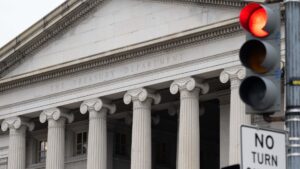The Worsening U.S. Deficit: A Call for Strategic Action
In a clear signal of the growing fiscal challenges facing the nation, the U.S. Treasury Department recently reported that the government’s financial health deteriorated further as May came to a close. This development is especially alarming for investors and stakeholders who follow macroeconomic trends closely.
The Current State of the Debt
After enjoying a brief surplus in April—attributable to tax season—May saw the deficit soar to over $316 billion, bringing the year-to-date total to a staggering $1.36 trillion. This figure marks a concerning 14% increase compared to last year, although it shows a 9% decrease relative to the same month in 2024.
With the U.S. debt now surpassing $36.2 trillion, interest payments have become an unsustainable burden. In May alone, interest on the national debt reached over $92 billion, surpassing all expenditures except for Medicare and Social Security. As a result, debt financing is anticipated to exceed $1.2 trillion for the fiscal year, exacerbating concerns about long-term economic stability.
Tax Revenue and Expenditures: A Mixed Bag
Interestingly, tax revenue has not been the primary issue. In May, tax receipts rose by 15%, reflecting a solid 6% increase from the previous year. Expenditures, however, increased by 2% on a monthly basis and 8% year-over-year.
The uptick in tariff collections—$23 billion for May—helped mitigate some of the financial shortfall, with total gross tariff collections for the year reaching $86 billion, which is up a remarkable 59% from the previous year. This unexpected revenue stream indicates that strategic fiscal policies can have a positive impact, albeit temporarily.
The Rising Cost of Borrowing
While revenue seems to be improving, the cost of borrowing continues to be a significant issue. Yields that dipped last summer have risen again, contradicting the Federal Reserve’s interest rate cuts. Currently, the yield on 10-year Treasuries hovers around 4.4%, signaling higher borrowing costs that could stifle economic growth.
Voices of Concern
Prominent financial leaders—including Jamie Dimon of JPMorgan Chase, Larry Fink from BlackRock, and Ray Dalio of Bridgewater Associates—have raised alarms about the precarious state of U.S. debt. The current deficit exceeds 6% of GDP, a breathtaking scenario for a peacetime economy. If this trend continues unchecked, we may face turbulent times ahead.
Strategic Investment Considerations
For investors and other stakeholders, it’s crucial to consider how these dynamics will shape market conditions. At Extreme Investor Network, we believe informed investment strategies require a close watch on fiscal health indicators. As the government struggles to balance its books, exploring alternative investments—such as infrastructure, Treasury Inflation-Protected Securities (TIPS), and even emerging market assets—could offer more secure opportunities.
Now more than ever, it’s vital for investors to stay ahead of economic trends and prepare for potential disruptions stemming from governmental fiscal mismanagement. Our network remains committed to delivering real-time insights and strategies that can help you navigate this changing landscape.
Final Thoughts
The ongoing fiscal challenges present both risks and opportunities for investors. Keeping a pulse on government actions, interest rate trends, and economic forecasts will be essential in navigating what may be a turbulent financial future. Join us at Extreme Investor Network for continuous updates and ensure your investment strategy is resilient in these uncertain times.

